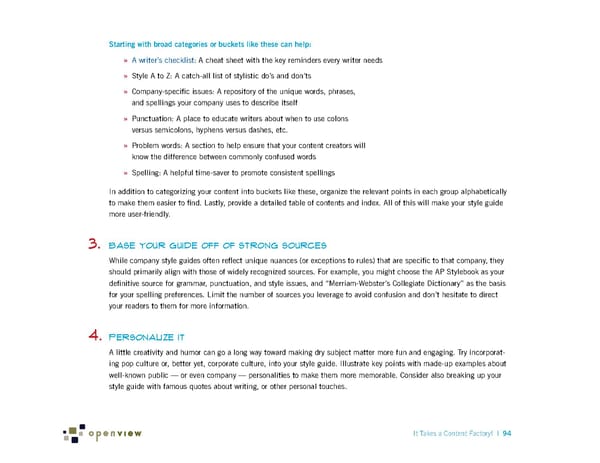Starting with broad categories or buckets like these can help: » A writer’s checklist: A cheat sheet with the key reminders every writer needs » Style A to Z: A catch-all list of stylistic do’s and don’ts » Company-specific issues: A repository of the unique words, phrases, and spellings your company uses to describe itself » Punctuation: A place to educate writers about when to use colons versus semicolons, hyphens versus dashes, etc. » Problem words: A section to help ensure that your content creators will know the difference between commonly confused words » Spelling: A helpful time-saver to promote consistent spellings In addition to categorizing your content into buckets like these, organize the relevant points in each group alphabetically to make them easier to find. Lastly, provide a detailed table of contents and index. All of this will make your style guide more user-friendly. 3. Base Your Guide off of Strong Sources While company style guides often reflect unique nuances (or exceptions to rules) that are specific to that company, they should primarily align with those of widely recognized sources. For example, you might choose the AP Stylebook as your definitive source for grammar, punctuation, and style issues, and “Merriam-Webster’s Collegiate Dictionary” as the basis for your spelling preferences. Limit the number of sources you leverage to avoid confusion and don’t hesitate to direct your readers to them for more information. 4. Personalize it A little creativity and humor can go a long way toward making dry subject matter more fun and engaging. Try incorporat- ing pop culture or, better yet, corporate culture, into your style guide. Illustrate key points with made-up examples about well-known public — or even company — personalities to make them more memorable. Consider also breaking up your style guide with famous quotes about writing, or other personal touches. It Takes a Content Factory! | 94
 It Takes a Content Factory! Page 99 Page 101
It Takes a Content Factory! Page 99 Page 101